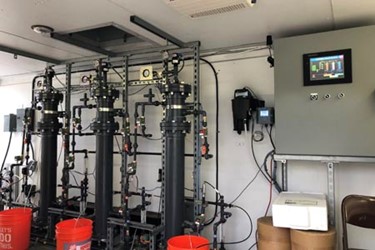Is Coagulation Followed By Filtration Viable To Remove Arsenic When Raw Water Arsenic Levels Are High? (Loprest)

The objective of the pilot study was to demonstrate “proof of concept” if coagulation followed by filtration was a viable technology to remove arsenic in water from Well No. 6 when raw water arsenic levels are so high, >70 ppb. Preparations were made to reduce the pH of the raw water if it was required. Also, two unique arsenic adsorptive medias were evaluated as a final polishing step to the effluent of the coagulation/filtration process.
The well also has borderline high uranium and nitrate levels. Although ion exchange is the best available technology, there are indications that uranium can be removed from drinking water by chemical clarification using ferric chloride as a coagulant. Ferric chloride addition is required for arsenic removal by coagulation/filtration so tests were done to determine if and what levels of uranium could be removed.
The levels of nitrate were also tested to determine if any reduction could be achieved. Because the nitrate ion is stable and highly soluble it is not amenable to removal by coagulation and precipitation or adsorption and filtration. Normally, ion exchange or a chemical reductive treatment is required for nitrate removal.
Get unlimited access to:
Enter your credentials below to log in. Not yet a member of Water Online? Subscribe today.
